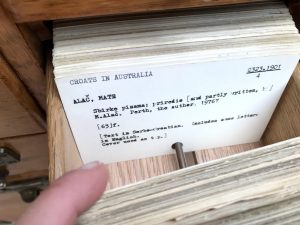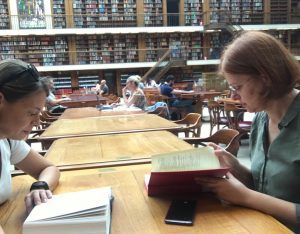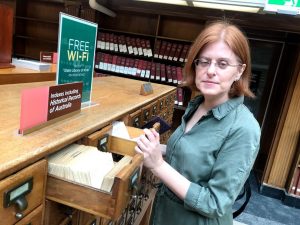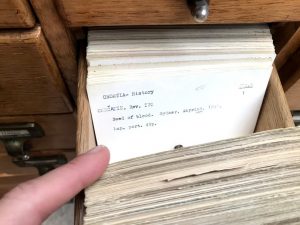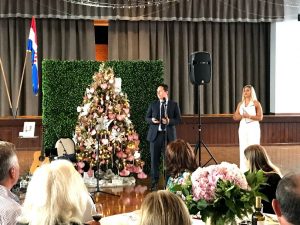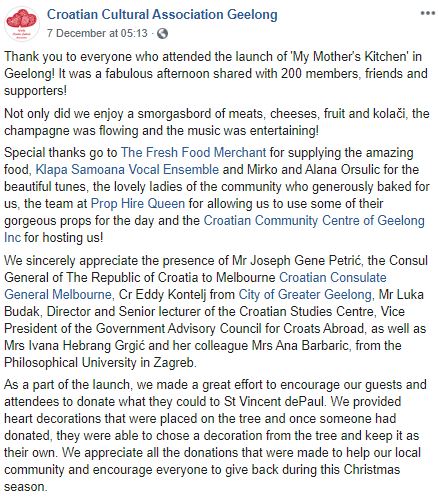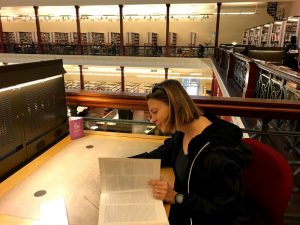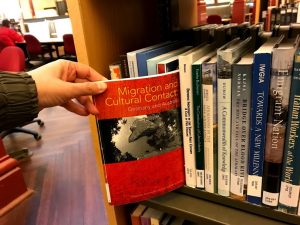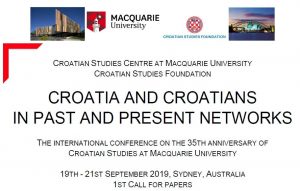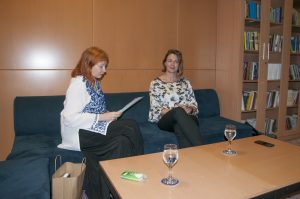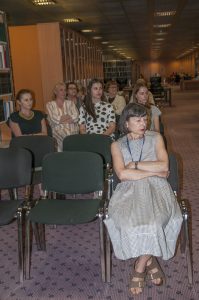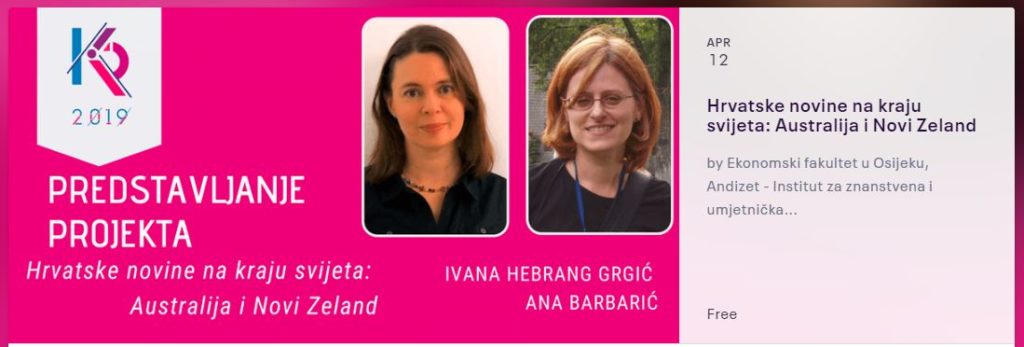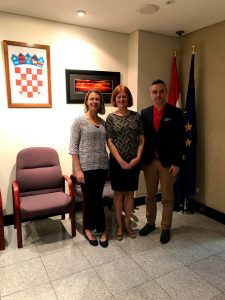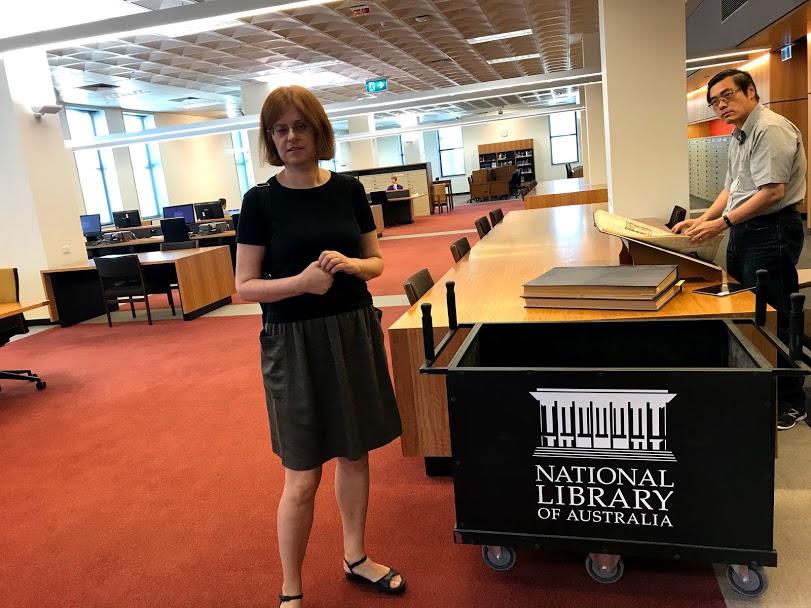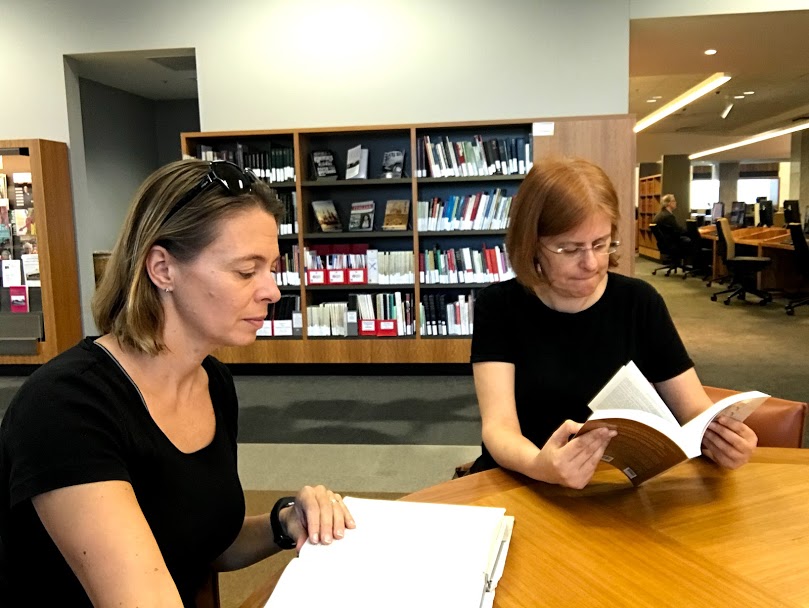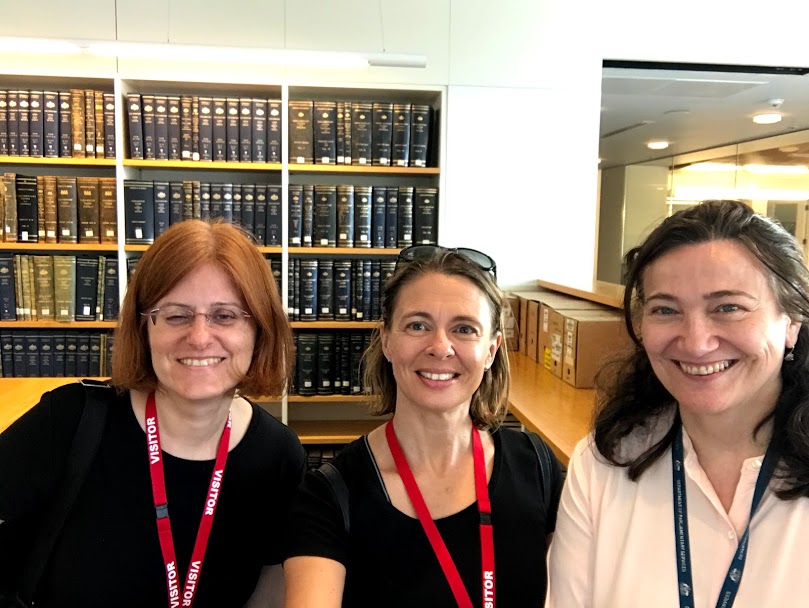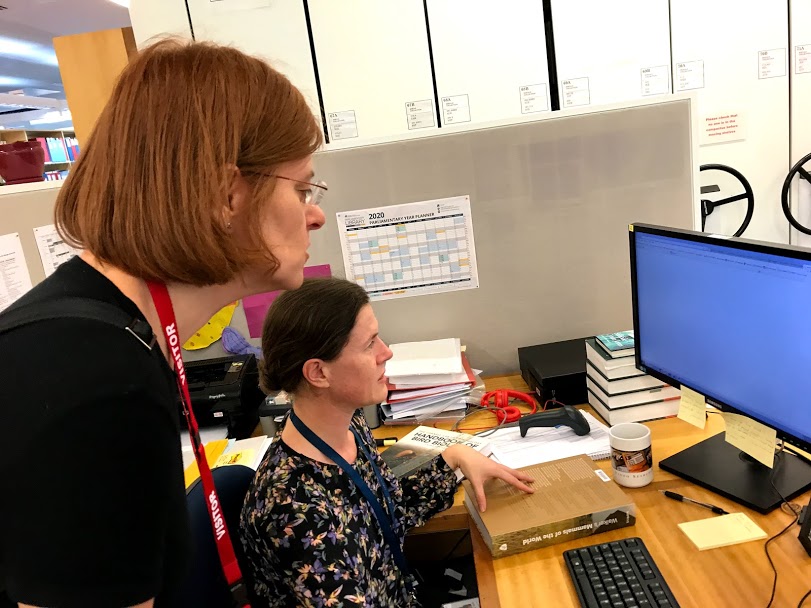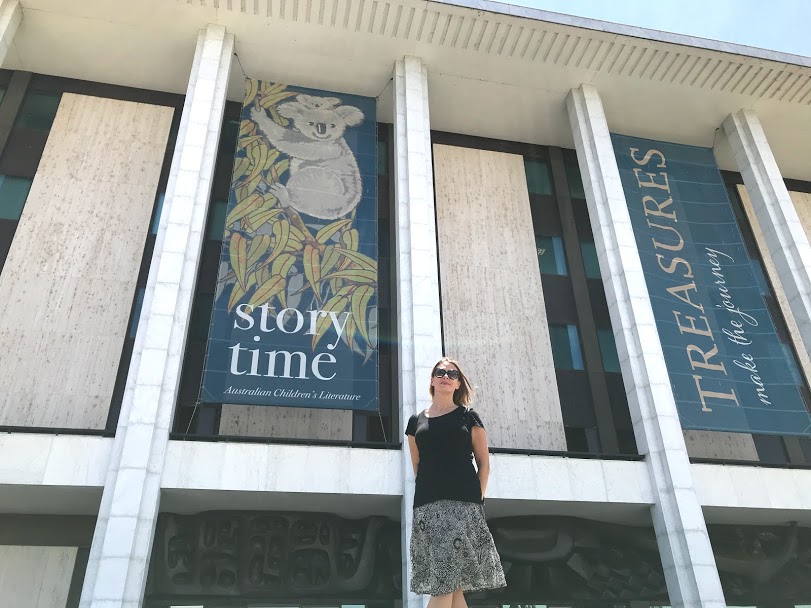Selected sources on Croats in Australia and New Zealand:
-
- Alagich, Marin; Kosovich, Steben. Early Croatian Settlement in Eastern Australia. // The Australian People: an Encyclopedia of the Nation, Its People and Their Origins / editor James Jupp. North Ryde : Angus and Robertson, 1988. pp. 235-239.
- Banović, Branimir. Institucijski okviri društvenog okupljanja hrvatskih doseljenika na Novom Zelandu. // Migracijske teme 9, 2(1993), pp. 105-116.
- Banović, Branimir. Potisni i privlačni faktori u iseljavanju iz Hrvatske u Australiju od konca 19. stoljeća do recentnog vremena. // Migracijske teme 6, 1(1990), pp. 7-19.
- Banović, Branimir. Prvi pokušaj društvenog okupljanja doseljenika iz Hrvatske na Novom Zelandu. // Migracijske teme 4, 1/2(1988), pp. 195-200.
- Bezić Filipović, Branka. Susret svjetova : 1 : Hrvatska – Australija. Split : Naklada Bošković, 2004.
- Bezić Filipović, Branka. Susret svjetova : 2 : Hrvatska – Novi Zeland. Split : Naklada Bošković, 2006.
- Božić-Vrbančić, Senka. Tarara : Croats and Maori in New Zealand : memory, belonging, identity. Dunedin : Otago University Press, 2008.
- Božić-Vrbančić, Senka. Tarara : Maori i Hrvati na Novom Zelandu. Zagreb : Jesenski i Turk, 2018.
- Brajdić, Ivo. O Australiji i australskim Hrvatima. Zagreb : Colorprint, 1993.
- Budak, Luka. The Conditions of Croatians. // The Australian People: an Encyclopedia of the Nation, Its People and Their Origins / editor James Jupp. North Ryde : Angus and Robertson, 1988. pp. 235-252.
- Čizmić, Ivan. Iz Dalmacije u Novi Zeland : povijest jugoslavenske naseobine na Novom Zelandu. Zagreb : Globus : Matica iseljenika Hrvatske, 1981.
- Franolić, Branko. Books on Croatia and Croatians : recorded in the British library general catalogue. Zagreb ; London ; New York ; Toronto ; Sydney : Croatian Information Centre, 1996-2000.
- Gazarek, Danko. Hrvatski iseljenici na Novom Zelandu u razdoblju 1850.-1940. : s posebnim osvrtom na oblike društvenog okupljanja : magistarski rad. Zareb : Filozofski fakultet, 2001. (mentor Branimir Banović)
- Hetrich, Ivan. Kroz Australiju. Zagreb : „Marin Držić“, 1996.
- Holjevac, Većeslav. Hrvati izvan domovine. 2. prošireno izd. Zagreb : Matica hrvatska, 1968.
- Hrvatska – Australija i Novi Zeland : povijesni i kulturni odnosi = Croatia – Australia & New Zealand : historical and cultural relations / osmislila i priredila = conceived and compiled by Tuga Tarle ; uredio = edited by Ivo Žanić. Zagreb : The Croatian Writer’s Association, 2000.
- Hrvatsko iseljeništvo i domovina: razvojne perspektive / uredili C. Hornstein Tomić; I. Hrstić; F. Majetić; I. Sabotič; M. Sopta. Zagreb : Institut društvenih znanosti Ivo Pilar, 2014. Dostupno na:
- Institucionalizacija hrvatske dijaspore: oblici migrantskog udruživanja: primjeri iz Europe, Južne Amerike i Australije / uredio Saša Božić. Zagreb: Naklada Jesenski i Turk : Hrvatsko sociološko društvo, 2012.
- Izbliza: Hrvati u Australiji: katalog izložbe. Zagreb : Hrvatska matica iseljenika, 2005.
- Jelicich, Stephen Albert. From distant villages : the lives and times of Croatian settlers in New Zealand : 1858-1958. Auckland : Pharos Publications Limited, 2008.
- Jelicich, Stephen Albert; Trlin, Andrew Drago. Hrvatska tiskana riječ na Novom Zelandu. // Hrvatska: Australija i Novi Zeland: povijesni i kulturni odnosi = Croatia: Australia & New Zealand: historical and cultural relations / osmislila i priredila = conceived and compiled by Tuga Tarle ; uredio = edited by Ivo Žanić. Zagreb : The Croatian Writer’s Association, 2000. pp. 108-114; 401-407.
- Jelicich, Stephen; Trlin, Andrew. Croatian. // Book [and] print in New Zealand : a guide to print culture in Aotearoa / editors Penny Griffith; Keith Maslen; Ross Harvey. Wellington : Victoria University Press, 1997.
- Klarić, Ante. History of the Croatian Catholic Mission, St. Leopold B. Mandić in Auckland, New Zealand (1904-2004). Auckland, N.Z. : Croatian Catholic Mission, 2004.
- Klarić, Ante. Povijest hrvatske katoličke misije Sv. Leopolda B. Mandića u Aucklandu (Novi Zeland) : (1904.-1999.). Auckland ; Split : CUS, 2000.
- Krpan Smiljanec, Marina. Začeci periodike hrvatskog iseljeništva. // Vjesnik bibliotekara Hrvatske 59, 3/4(2016), pp. 153-181.
- Lalić, Vori. Egzodus iz Australije u doba Hladnoga rata: povratak hrvatskih iseljenika iz Australije brodovima Partizanka i Radnik godine 1948-1949. // Gordogan 19-22(2010), pp. 66-125.
- Lovoković, Fabijan. Hrvatske zajednice u Australiji : nastojanja i postignuća. Kingsgrove : Sradišnji odbor hrvatskih društava Australije = Central Council of Croatian Associations in Australia, 2010.
- Marković, Luka. Pod australskim nebom. Zagreb : Jugoslavenska akademija znanosti i umjetnosti, 1973.
- Mesarić Žabčić, Rebeka. Australija, obećana zemlja? // Geografski horizont 2(2008), pp. 17-27.
- Mesarić Žabčić, Rebeka. Katolička crkva kao nositelj očuvanja hrvatskog identiteta u državi New South Wales u Australiji. // Časopis za hrvatske studije 6(2010), pp. 129-140.
- Smoje, Neven. Shipwreckd on the North West Coast: the ordeal of the survivors of the Stefano. // Early Days: Journal of the Royal Western Australian Historical Society, 8, 2(1978), pp. 35-47.
- Smoljan, Ivo, Hrvatska dijaspora. Zagreb : Horizont press, 1997.
- Stenning, Mary. Zapisi o prvim hrvatskim doseljenicima (neobjavljeni rad). North Manly, 1989.
- Stoljeće hrvatske knjige u iseljeništvu : 1900.-2000. : katalog izložbe. Zagreb : Nacionalna i sveučilišna knjižnica, 2001.
- Šeparović, Zvonimir. Od Sydneya do San Francisca : dijaspora ili rasutost mještana Blata na Korčuli diljem svijeta. Čakovec : Zrinski, 1982.
- Škvorc, Boris. Australski Hrvati: mitovi i stvarnost. Zagreb : Hrvatska matica iseljenika, 2005.
- Šutalo, Ilija. Croatians in Australia: Pioneers, Settlers and their Descendants. Kent Town : Wakefield Press, 2004.
- Tkalčević, Mato. Hrvati u Australiji. Zagreb : Nakladni zavod Matice hrvatske, 1992.
- Tkalčević, Mato. Povijest Hrvata u Australiji. Melbourne : Hrvatski svjetski kongres u Australiji, 1999.
- Trlin, Andrew D. Now respected, once despised : Yugoslavs in New Zealand. Palmerston North, N.Z. : Dunmore Press, 1979. (Based on the author’s theses: M.A., Victoria University of Wellington, 1967; Ph. D., Massey University, 1974)
- Trlin, Andrew. Foundations : early Croatian immigration to New Zealand. Auckland : Opuzen Press, 2016.
- Trlin, Andrew. Immigrants in Auckland : a contribution to human ecology : doctoral thesis. Auckland : Massey University, 1974.
- Trupinić, Damir. New Zealand Croatian immigrant press 1899-1916 : quantitative and qualitative study of the content. Berlin : Lambert Academic Publishing, 2009.


